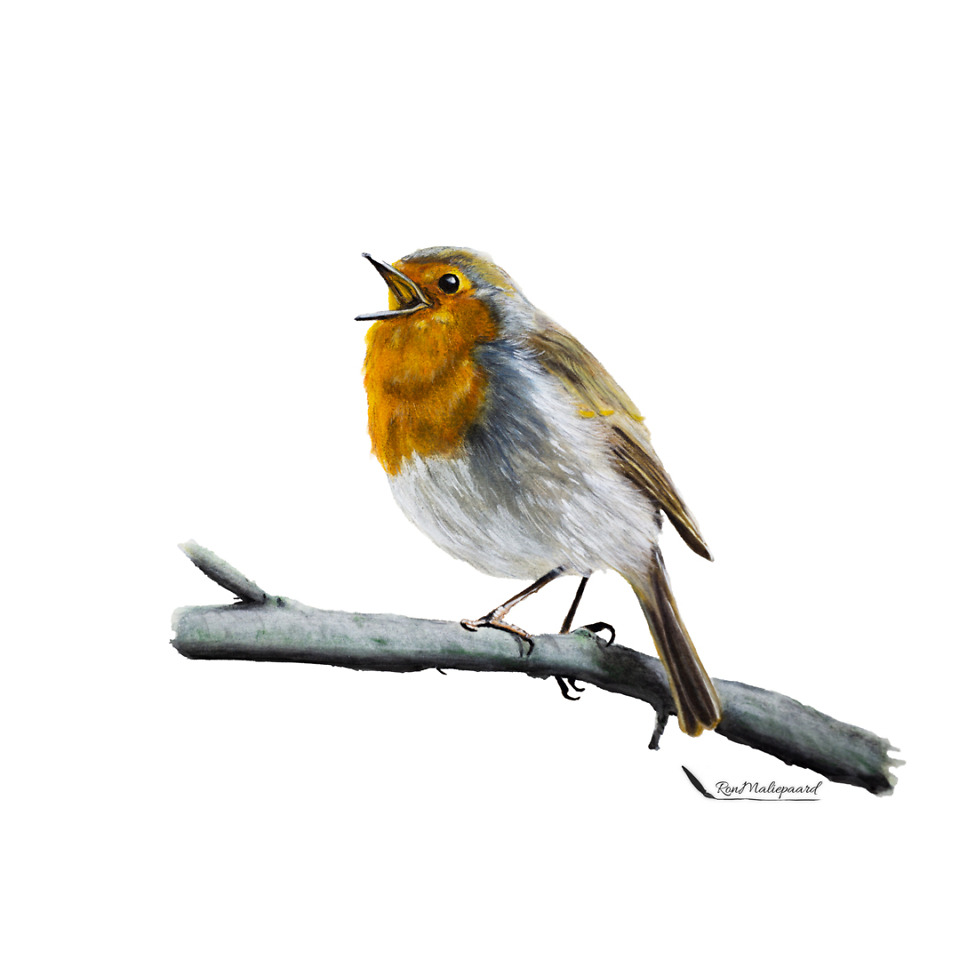
Lovely that beautiful song of Robins (Erithacus rubecula), you can hear them all year round, both males and females, in the breeding season, autumn, winter, in the evening and morning. But don’t think that that’s a sweet song. No, it’s purely territorial behavior. They sing to claim the territory. It’s probably a good thing you can’t translate that sound via google translate into speech, it probably wouldn’t sound so nice…
Robins fanatically defend their kingdom, where they live solitary for the most part. They desperately need that area to find enough insects not to starve. They therefore chase away every other Robin who dares to enter their kingdom. They mainly react to the red-orange color, which they have an aversion to. It can even happen that if you come into their area with something with a red color, for example a sweater, you will also be chased as if you were a threat.
Both males and females have such a beautiful orange breast. And that creates a problem. Because how is it with couples, how they can get little Robins? They really can’t stand each other because of that orange breast. When the female enters the territory of a male, she is therefore spontaneously attacked. But at that moment she doesn’t fight back and hopes that the male will repent and endure her. If all goes well, there will be little Robins.
And those little ones don’t have a red breast yet, but are brown, That’s a good thing, otherwise they would immediately be chased out of the nest by both parents who are already having such a hard time with each other!
That aversion is even hidden in a Dutch song: ‘Robin taps against the window.
It’s really not because they want to get in, but because they see a potential intruder in their own reflection. They do not know that it is themselves. They would probably go crazy at the thought of having such a red breast of their own.
Reference: own photo
Cotman watercolours tubes, Faber Castel Polychromos & Pastel pencils, Posca stift onSaunders Waterford 300gsm 310×230 Cotton Satiné High White paper
